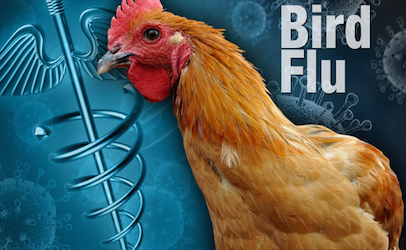USDA’s Animal and Plant Health Inspection Service (APHIS) reports that after a summer pause, Highly Pathogenic Avian Influenza has returned in significant numbers.
Since Sept. 1, another 3.88 million birds have been lost either to the virus or by culling to prevent its spread. The most recent outbreaks affected 66 flocks, including 31 commercial and 35 backyard flocks.
According to APHIS, the post-summer outbreaks are all part of the worldwide epidemic first experienced in the U.S. on Feb 8, 2022.
Since then, APHIS claims to “have worked swiftly to identify and respond to detections and mitigate the virus’s impact on the U.S. poultry production and trade.” However, there are no predictions on when the avian flu epidemic will end.
About 70 people in the United States have been infected, mostly workers at poultry and dairy operations. At lease one person has died. That person did not have any connection with animal operations. Well more than 1,000 dairy herds have been infected and numerous wild mammals have tested positive for the virus.
There is concern that the virus is mutating and could pose a greater risk to humans. CDC researchers, in doing a review of past studies this past summer, said person-to-person transmission is likely to occur at some point “in some settings.”
Asymptomatic human avian influenza A(H5N1) infections occur, and person-to-person transmission is likely in some settings, according to a scoping review by CDC researchers.
The study, published Oct. 29 in JAMA Network Open, involved a search for studies on confirmed highly pathogenic H5N1 infection published through Aug. 25.
Resurgence among wild and domestic birds
This year follows the previous trend, with bird flu detections higher in the spring and fall, aligning with the migration patterns of wild birds flying to their seasonal homes.
Outbreaks in the past week stretched from California to South Dakota and Montana, and then on to Georgia and Pennsylvania.
Flocks in those areas have added to the loss that now totals 182.60 million birds from 839 commercial and 964 backyard flocks in all 50 states and one U.S. territory.
The Centers for Disease Control and Prevention finds avian flu to be a low risk for humans. There’s been no known person-to-person spread.
(To sign up for a free subscription to Food Safety News, click here.)



